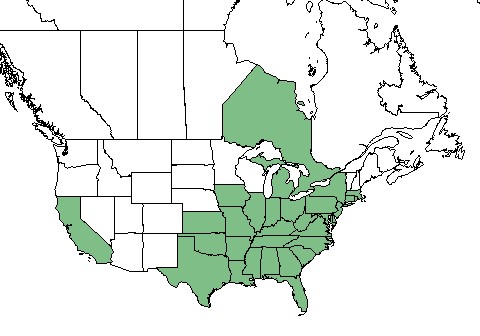Difference between revisions of "Andropogon virginicus"
(→Taxonomic Notes) |
(→Ecology) |
||
| Line 33: | Line 33: | ||
<!--===Fire ecology===--> <!--Fire tolerance, fire dependence, adaptive fire responses--> | <!--===Fire ecology===--> <!--Fire tolerance, fire dependence, adaptive fire responses--> | ||
<!--===Pollination===--> | <!--===Pollination===--> | ||
| − | + | ||
| + | ===Use by animals=== <!--Herbivory, granivory, insect hosting, etc.--> | ||
| + | ''A. virginicus'' can encompass 2-5% of the diet for large mammals and terrestrial birds as well as occasionally being used as cover for terrestrial birds.<ref name="USDA"/> | ||
<!--==Diseases and parasites==--> | <!--==Diseases and parasites==--> | ||
Revision as of 17:00, 12 December 2017
| Andropogon virginicus | |
|---|---|

| |
| Photo by the Atlas of Florida Plants Database | |
| Scientific classification | |
| Kingdom: | Plantae |
| Division: | Magnoliophyta - Flowering plants |
| Class: | Liliopsida - Moncots |
| Order: | Cyperales |
| Family: | Poaceae |
| Genus: | Andropogon |
| Species: | A. virginicus |
| Binomial name | |
| Andropogon virginicus L | |

| |
| Natural range of Andropogon virginicus from USDA NRCS Plants Database. | |
Common Name(s): smooth bluestem, deceptive bluestem, old-field broomstraw, broomsedge, sedge grass, sage grass[1], broomsedge bluestem[2]
Contents
Taxonomic Notes
Varieties: A. virginicus var. virginicus; A. virginicus var. decipiens;[1][2] A. virginicus var. 1[1]
Description
Distribution
Ecology
Habitat
Andropogon virginicus is commonly found in longleaf pine savannas, savannas, flatwoods, maritime wet grasslands, disturbed pinelands, other wetlands, old fields, roadbanks, and disturbed sites.[1]
Use by animals
A. virginicus can encompass 2-5% of the diet for large mammals and terrestrial birds as well as occasionally being used as cover for terrestrial birds.[2]